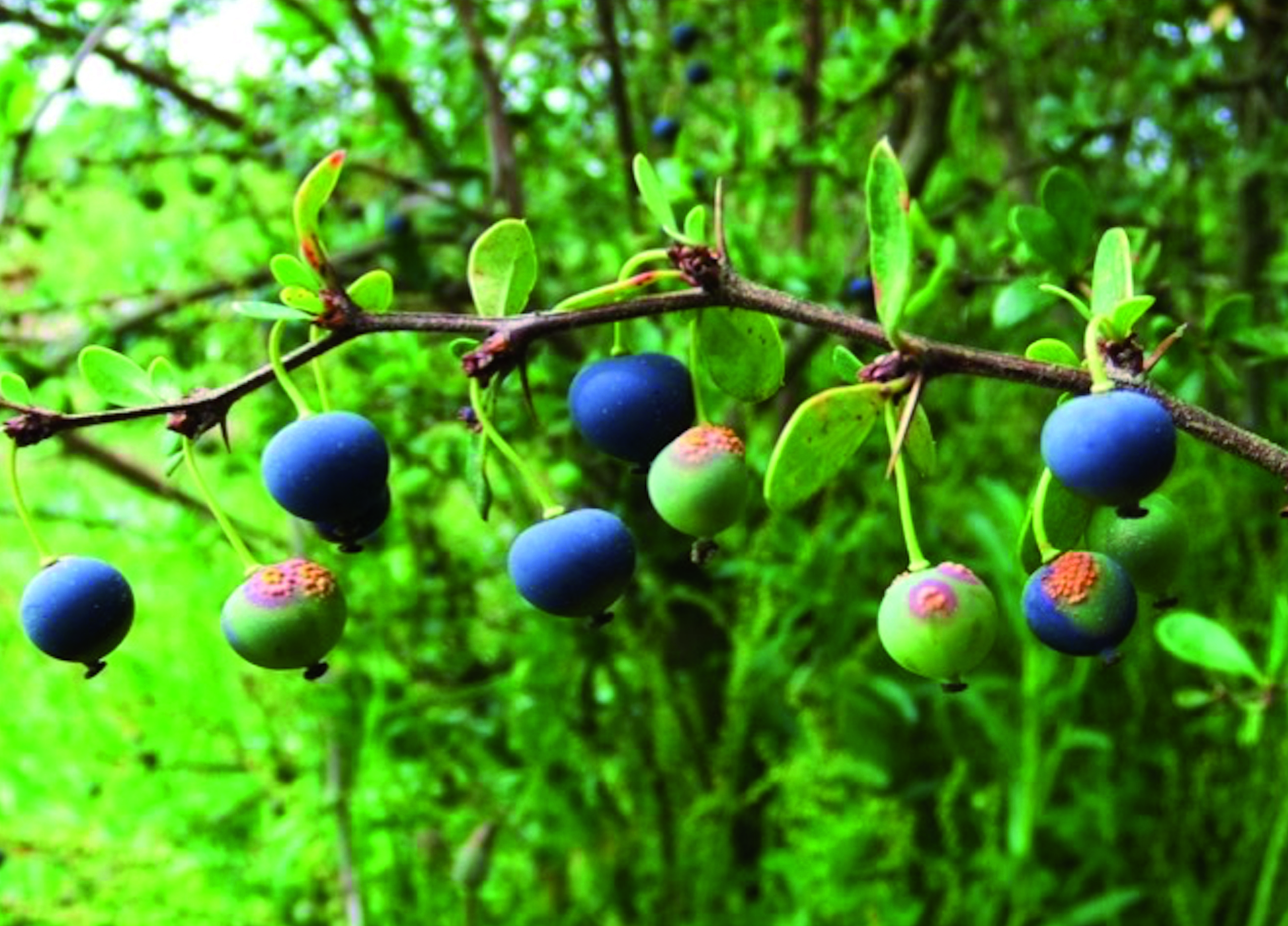Puccinia meyeri-albertii in leaf and fruit of calafate (Berberis microphylla) in La Araucanía Region, Chile
Keywords:
Berberis, Calafate, Puccinia meyeri-albertii, rustAbstract
Calafate (Berberis microphylla G. Forst) is an endemic species of the Patagonian Andes of Chile and Argentina, with potential use for agroindustry. One aspect that could be restrictive for the production is the Calafate rust (Puccinia meyeri-albertii P. Magn), which the last reference in Chile dated from 1945. The objective of this study was to identify and updated report about to the prevalence of Calafate rust in La Araucanía Region, Chile. The rust identification was consistent as that reported for P. meyeri-albertii, aspects also confirmed by Centre for Agricultural Bioscience International (CABI) under number IMI-50016. The sequence amplified of the 28S rDNA (accession number KY555071) had an identity of 97% with others six Puccinia species, likewise, the genetic relationship analysis established that P. meyeri-albertii had higher divergences in the nucleotide substitutions respect to the others rusts; it consign that no nucleotide sequences available in NCBI database for P. meyeri-albertii. Prospecting realized the 2011-2012 seasons in an experimental Calafate orchard, the incidence and severity were respectively: 24.70% (range 4.72-36.90%) and severity 2.97 (2.15-3.30, range affected area) in leaves; and in fruits 13.78 % (range 1.13-23.84%) and 2.40 (2.01-2.78, range affected area). Hence, we suggest that it is necessary to develop molecular, epidemiological and control research, as also to determine the infection level of this pathogen in others Calafate ecotypes and Berberis species growing in different edaphoclimatic conditions.
Downloads

Downloads
Published
How to Cite
Issue
Section
License
Aquellos autores/as que tengan publicaciones con esta revista, aceptan las Políticas Editoriales.










.jpg)




